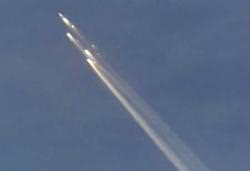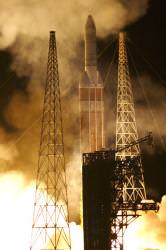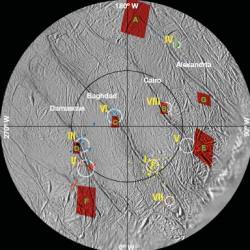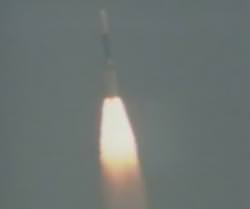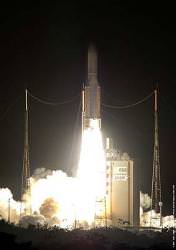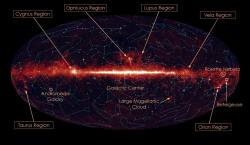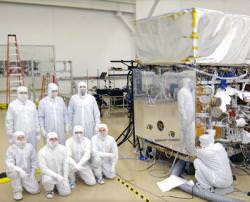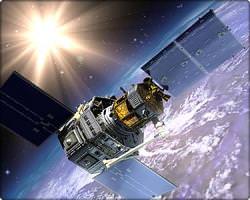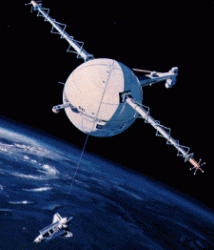After all the excitement surrounding the possibility of asteroid 2007 WD5 hitting Mars and the concern of Near Earth Asteroid 2007 TU24 dropping to Earth, we now have something new (and manmade) to worry about. A US spy satellite has lost power and its orbit has begun to degrade. Officials are sketchy about the details, but the large satellite could survive the burn of re-entry and crash into the surface… but we don’t know where. The satellite might contain dangerous materials… but we can’t be sure. Either way, the dead spy satellite is expected to drop to Earth late February or early March.
This event could prove embarrassing for the US government, as there is little idea where the site of impact will be, sensitive US secrets could be exposed about the technology behind the orbital capabilities of the superpower nation. Officials have declined to comment whether the satellite could be shot down by missile, but this will surely remain an option.
“Numerous satellites over the years have come out of orbit and fallen harmlessly. We are looking at potential options to mitigate any possible damage this satellite may cause.” – Spokesman for the National Security Council, Gordon Johndroe
The problem doesn’t stop with the possibility of fatal damage should the satellite fall in the wrong place. An anonymous official has added there may be the possibility the satellite could be carrying hazardous materials. During atmospheric burn-up, this unknown material could be spread over thousands of miles of atmosphere.
This usually isn’t a concern when satellites and other debris are brought to Earth in controlled re-entries. Large defunct satellites can usually have their orbital trajectories finely tuned so they fall safely though the atmosphere and crash into “satellite graveyards” in deep ocean trenches (i.e. the Mir space station was guided out of orbit in 2001 and sunk in the Pacific 6000 km off the Australian coast).
Hopefully a solution to this tricky problem can be found quickly, but it is hoped that most of the satellite will disintegrate during re-entry and any leftovers drop into the ocean… but it would be nice to know if there is a risk of impact anywhere other than the oceans.Â
Source: MSNBC.com

